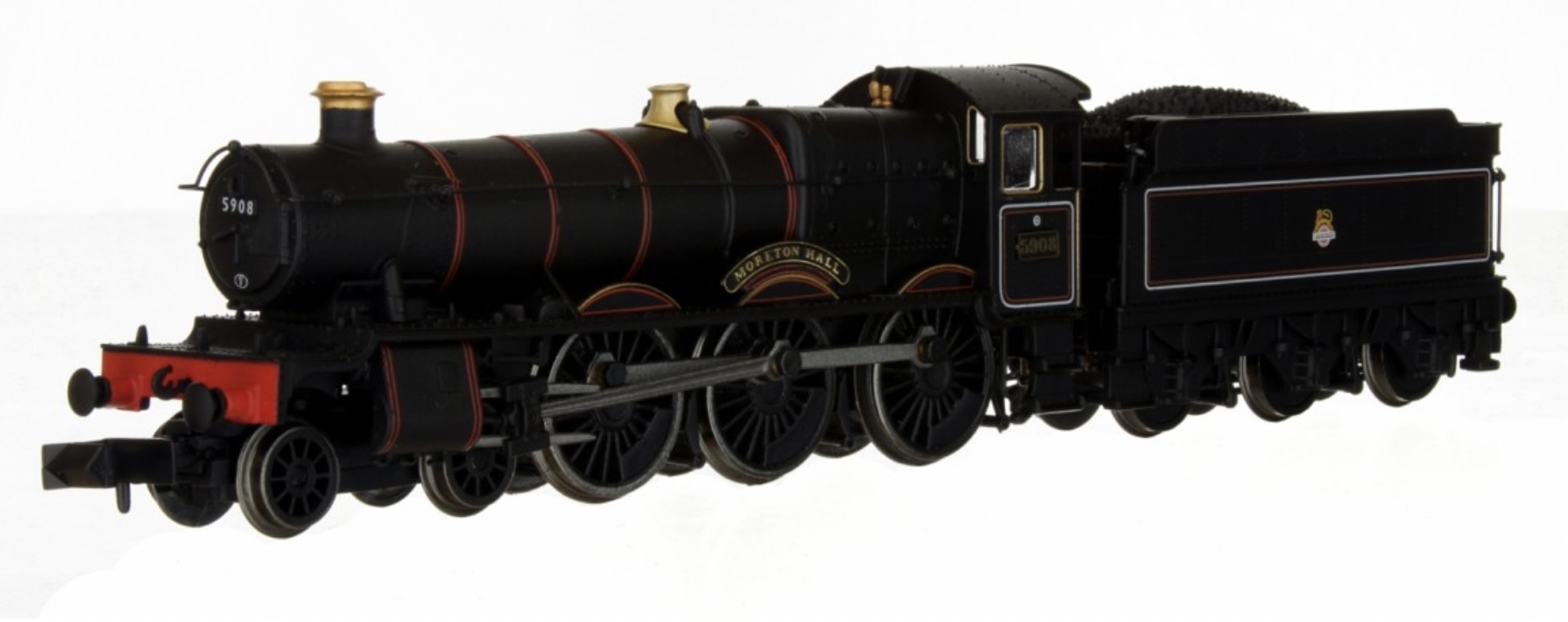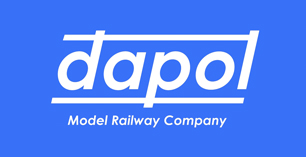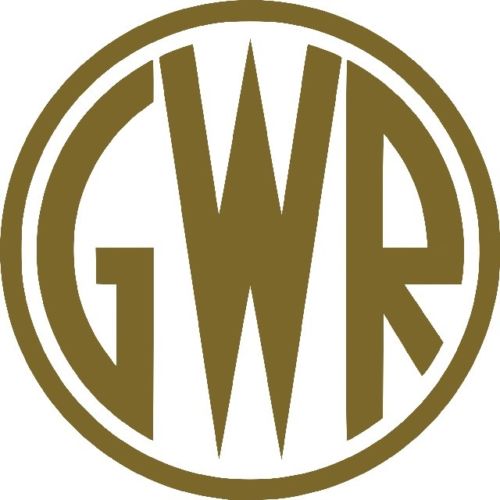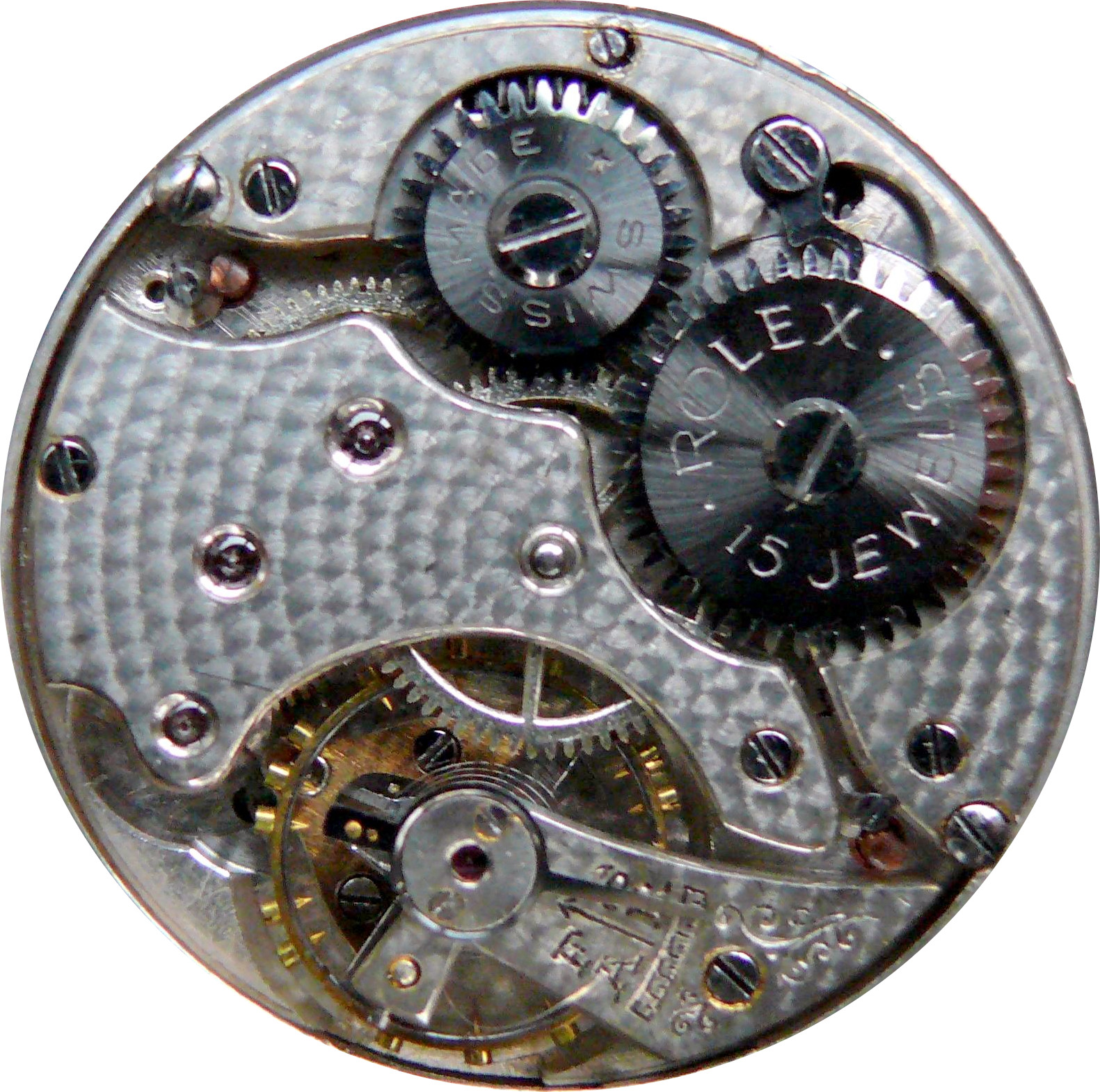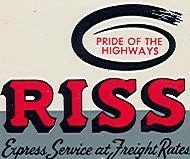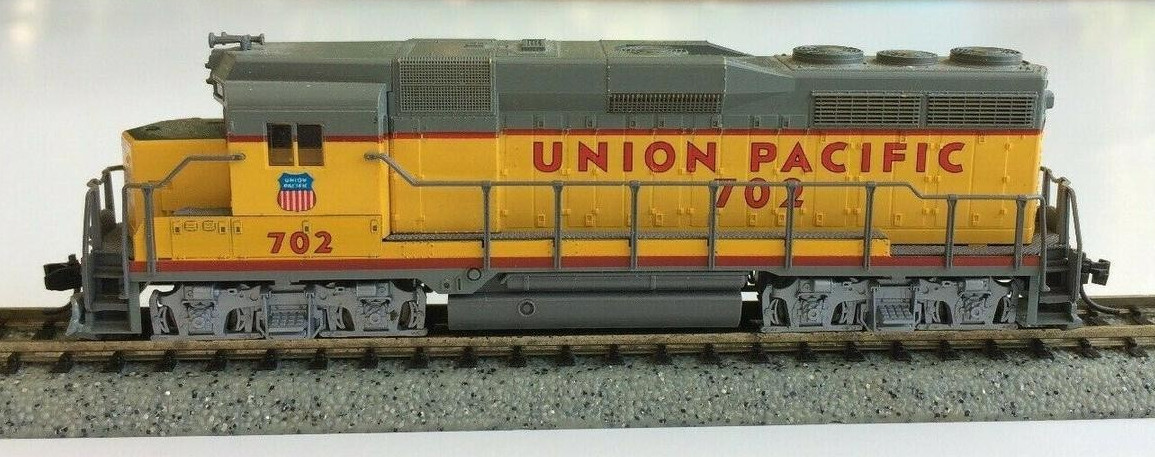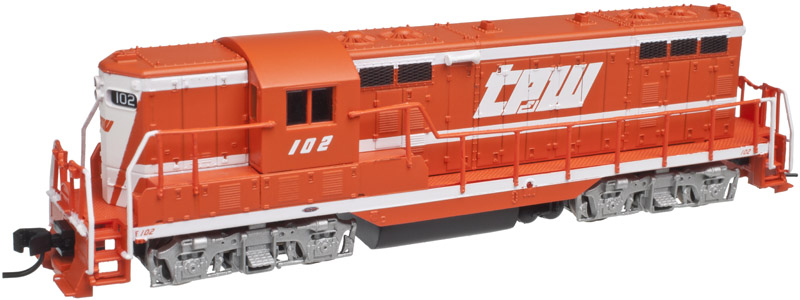Specific Item Information: The Great Western Hall was designed by Charles Collett for the haulage of passengers and freight. The locomotive was introduced in 1928 and was not withdrawn until 1965, a testament to the design and popularity of the locomotive. In all 259 locomotives were built and 11 survive into preservation. During its long life span the locomotive was modified and upgraded many times and Dapol hope to produce many of these modifications
Road Name History: The Great Western Railway (GWR) was a British railway company that linked London with the south-west and west of England, the Midlands, and most of Wales. It was founded in 1833, received its enabling Act of Parliament on 31 August 1835 and ran its first trains in 1838. It was engineered by Isambard Kingdom Brunel, who chose a broad gauge of 7 ft (2,134 mm)—later slightly widened to 7 ft 1⁄4 in (2,140 mm)—but, from 1854, a series of amalgamations saw it also operate 4 ft 8 1⁄2 in (1,435 mm) standard-gauge trains; the last broad-gauge services were operated in 1892. The GWR was the only company to keep its identity through the Railways Act 1921, which amalgamated it with the remaining independent railways within its territory, and it was finally merged at the end of 1947 when it was nationalised and became the Western Region of British Railways.
The GWR was called by some "God's Wonderful Railway" and by others the "Great Way Round" but it was famed as the "Holiday Line", taking many people to English and Bristol Channel resorts in the West Country as well as the far south-west of England such as Torquay in Devon, Minehead in Somerset, and Newquay and St Ives in Cornwall. The company's locomotives, many of which were built in the company's workshops at Swindon, were painted a Brunswick green colour while, for most of its existence, it used a two-tone "chocolate and cream" livery for its passenger coaches. Goods wagons were painted red but this was later changed to mid-grey.
Great Western trains included long-distance express services such as the Flying Dutchman, the Cornish Riviera Express and the Cheltenham Spa Express. It also operated many suburban and rural services, some operated by steam railmotors or autotrains. The company pioneered the use of larger, more economic goods wagons than were usual in Britain. It operated a network of road motor (bus) routes, was a part of the Railway Air Services, and owned ships, docks and hotels.
From Wikipedia
The GWR was called by some "God's Wonderful Railway" and by others the "Great Way Round" but it was famed as the "Holiday Line", taking many people to English and Bristol Channel resorts in the West Country as well as the far south-west of England such as Torquay in Devon, Minehead in Somerset, and Newquay and St Ives in Cornwall. The company's locomotives, many of which were built in the company's workshops at Swindon, were painted a Brunswick green colour while, for most of its existence, it used a two-tone "chocolate and cream" livery for its passenger coaches. Goods wagons were painted red but this was later changed to mid-grey.
Great Western trains included long-distance express services such as the Flying Dutchman, the Cornish Riviera Express and the Cheltenham Spa Express. It also operated many suburban and rural services, some operated by steam railmotors or autotrains. The company pioneered the use of larger, more economic goods wagons than were usual in Britain. It operated a network of road motor (bus) routes, was a part of the Railway Air Services, and owned ships, docks and hotels.
From Wikipedia
Brand/Importer Information: Dapol Ltd is a Welsh model railway manufacturer based in Chirk, Wales. The factory where design and manufacturing take place is just over the border in England. The company is known for its model railway products in N gauge and OO gauge. Dapol's name is a play on its founders David and Pauline Boyle's names. He owned a model concern Highfield Birds & Models. In 1981 he first tried to buy the Airfix and Mainline ranges. The Dapol brand name was first used in a Railway Modeller advert of September 1983. The first Dapol wagons (for OO) were announced to become available on 20 November 1983. From 1 March 1984 ex Airfix railway kits became available.
Dapol manufactures a growing range of N gauge locomotives, coaches and wagons, and is the main competitor of Graham Farish in the British 'ready-to-run' market. Continuous improvement in model specifications has led to the introduction of 40:1 gearing in locomotive drive mechanisms, NEM couplings on all stock, and LED lighting strips for coaching stock (yellow for 'older' coaches, to represent incandescent illumination, and white for more modern coaches and EMUs to represent fluorescent fittings).
Dapol manufactures a growing range of N gauge locomotives, coaches and wagons, and is the main competitor of Graham Farish in the British 'ready-to-run' market. Continuous improvement in model specifications has led to the introduction of 40:1 gearing in locomotive drive mechanisms, NEM couplings on all stock, and LED lighting strips for coaching stock (yellow for 'older' coaches, to represent incandescent illumination, and white for more modern coaches and EMUs to represent fluorescent fittings).
Item created by: CNW400 on 2022-01-13 16:34:39
If you see errors or missing data in this entry, please feel free to log in and edit it. Anyone with a Gmail account can log in instantly.
If you see errors or missing data in this entry, please feel free to log in and edit it. Anyone with a Gmail account can log in instantly.


